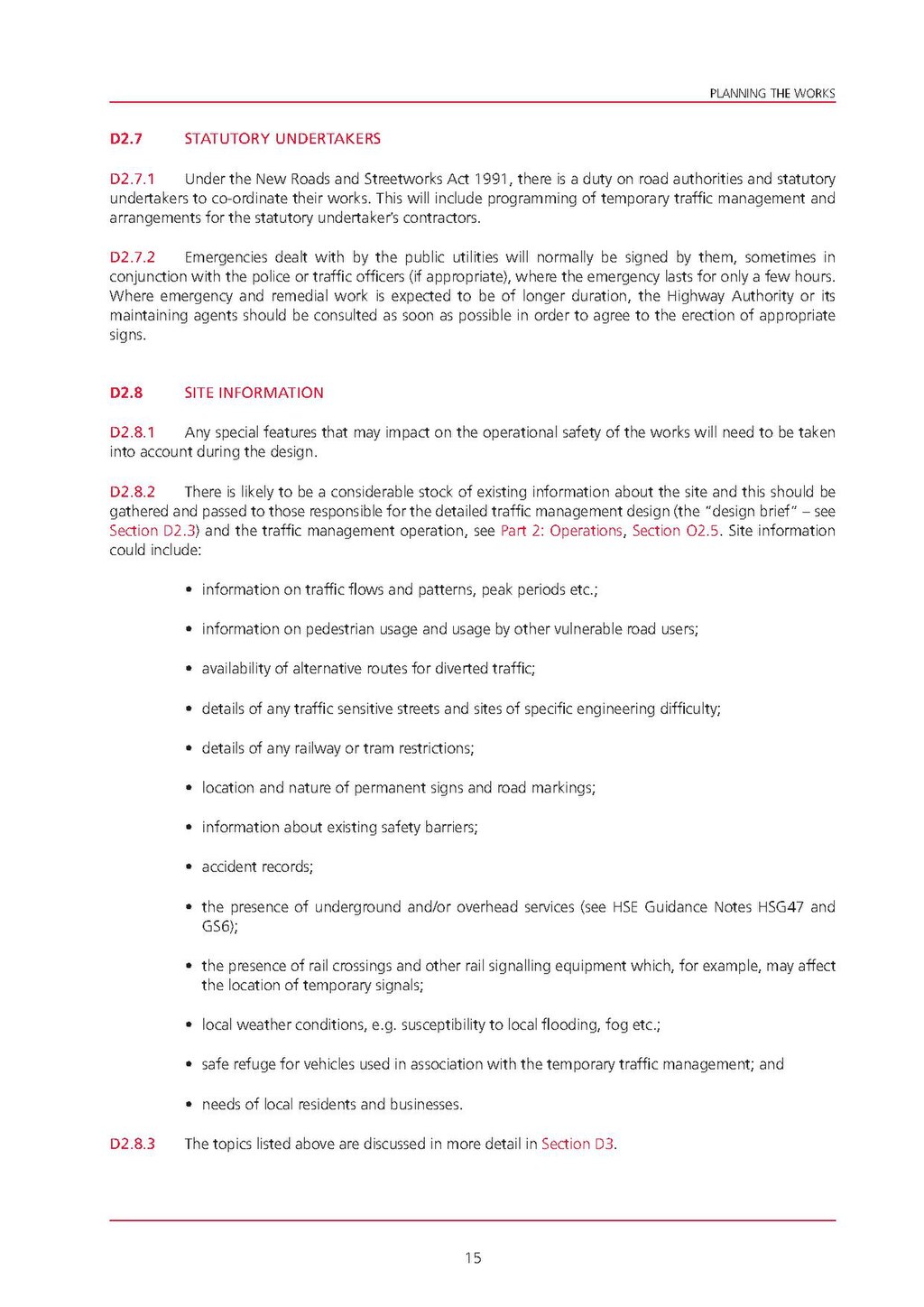D2.7STATUTORY UNDERTAKERS
D2.7.1 Under the New Roads and Streetworks Act 1991, there is a duty on road authorities and statutory undertakers to co-ordinate their works. This will include programming of temporary traffic management and arrangements for the statutory undertaker’s contractors.
D2.7.2 Emergencies dealt with by the public utilities will normally be signed by them, sometimes in conjunction with the police or traffic officers (if appropriate), where the emergency lasts for only a few hours. Where emergency and remedial work is expected to be of longer duration, the Highway Authority or its maintaining agents should be consulted as soon as possible in order to agree to the erection of appropriate signs.
D2.8SITE INFORMATION
D2.8.1 Any special features that may impact on the operational safety of the works will need to be taken into account during the design.
D2.8.2 There is likely to be a considerable stock of existing information about the site and this should be gathered and passed to those responsible for the detailed traffic management design (the "design brief" – see Section D2.3) and the traffic management operation, see Part 2: Operations, Section O2.5. Site information could include:
- information on traffic flows and patterns, peak periods etc.;
- information on pedestrian usage and usage by other vulnerable road users;
- availability of alternative routes for diverted traffic;
- details of any traffic sensitive streets and sites of specific engineering difficulty;
- details of any railway or tram restrictions;
- location and nature of permanent signs and road markings;
- information about existing safety barriers;
- accident records;
- the presence of underground and/or overhead services (see HSE Guidance Notes HSG47 and GS6);
- the presence of rail crossings and other rail signalling equipment which, for example, may affect the location of temporary signals;
- local weather conditions, e.g. susceptibility to local flooding, fog etc.;
- safe refuge for vehicles used in association with the temporary traffic management; and
- needs of local residents and businesses.
D2.8.3 The topics listed above are discussed in more detail in Section D3.
15
